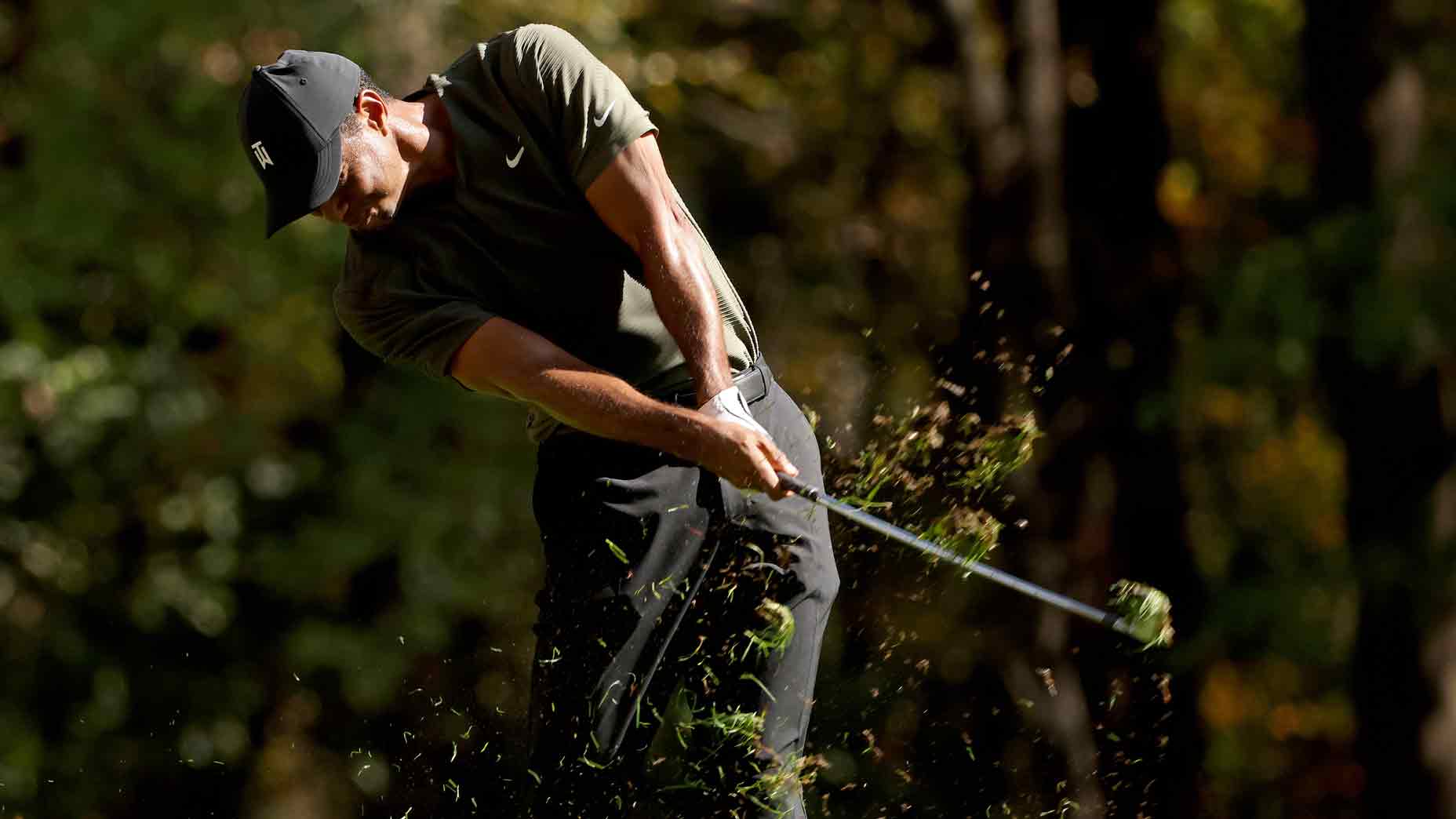AUGUSTA, Ga. — The rough around Augusta National is usually so benign it has a precious euphemism: the second cut. But things are different this year, as Bryson DeChambeau discovered Friday afternoon whilst playing the 3rd hole. He sniped his tee shot 15 or 20 paces into the left rough and then his ball simply disappeared, never to be found again.
It was a wickedly unlucky break and the ensuing triple bogey pushed the pre-tournament favorite to the wrong side of the projected cut line. It also vividly underscored how much longer and thicker the second cut is this year. Traditionally it’s cut to exactly 1 3/8”, but Danny Willett said on Friday “you could maybe call it close to three inches.”
The heartier Bermuda grass has been sprouting in an unseasonably warm autumn while sporadic rain this week has made it impossible for Augusta National to run mowers on the soft ground. “I played a practice round Monday and I noticed it was longer then and they haven’t cut it since,” Bernhard Langer said on Friday. “It’s getting longer every day.”
Grainier, too, as the ryegrass and Bermuda comingle. “If you have a down grain lie,” says Tiger Woods, “yeah, you can get to the green, maybe even control it, but when the grain is sitting down, there’s really no chance, so you’re going to have to rely on short game and angles.”
DeChambeau is the only player so far to actually lose a ball but every shot out of the rough is problematic. The swirls of grass are a kind of Rorschach test and every player must intuit how their balls will react when struck, accounting for idiosyncratic angles of attack, clubhead speed, model of ball and groove pattern in their irons. “It’s a hell of a lot longer than I think what most guys have seen it,” Willett says. “Wet under that, as well, so we’re getting a lot [of balls] that are coming out a little bit dead. Yeah, trying to judge your distance out of this stuff, probably better it coming out dead than it coming out quick, to be honest.”
Phil Mickelson sees it exactly the opposite: “Although it’s a little longer, because it’s wet, it’s not as sticky. When it’s dry, it’s sticky, and the ball comes out dead, but because it’s a little wet, the ball’s kind of coming out okay and not coming up as short as it normally does.”
The second cut was introduced as a low-key penalty for errant drives; it makes it a little harder to impart spin, and that is significant when playing to precise spots on the ultimate second-shot golf course. But the rain taketh and the rain giveth. Adam Scott has been largely unbothered by the vagaries of the rough because the saturated greens are still so soft that even spinless shots from the second cut are stopping dead. “Normally, you’re just losing that little bit of control,” Scott says, “and on a firmer green, you’ve got some difficult decisions to make on how you’re going to manage to get it on the green or keep it on the green. It’s a little more straightforward out there at the moment.”
And because it’s 2020, there are times when hitting it into the rough can actually feel advantageous. Fowler estimates he’s getting half-a-dozen mudballs per round on the closely-cropped fairways. “Actually, I mentioned it to [playing partner Willett] yesterday when we were on 11. He had just missed the fairway right, into the first cut, and chipped a 6- or 7-iron down there to the middle of the green. I was in the middle of the fairway with a mud ball and had to aim over at 12 tee, and I still almost hit it in the water. So I feel like it’s almost harder to pick up mud balls in that first cut. In some situations, you’d almost rather that, or you wouldn’t mind it.”
There is much to consider here but it’s probably wise to give Bernhard Langer the last word: “There’s plenty of fairway out there, you’ve just got to hit it straight.”
